I wrote a function glmnetPath to do this. It initially appeared in my answer to a more recent Stack Overflow Q & A (sorry, I discovered this Q & A later), but was then shipped in an R package on GitHub.
## you may need to first install package "remotes" from CRAN
remotes::install_github("ZheyuanLi/solzy")
## Zheyuan Li's R functions on Stack Overflow
library(solzy)
The function works for models fitted by glmnet and cv.glmnet.
It is computationally efficient. It is fully vectorized without using loops. It also does not convert sparse coefficient matrix to a dense matrix for processing.
It provides a very informative summary of a coefficient path. Here is a reproducible example for demonstration.
library(glmnet)
library(solzy)
set.seed(42)
x <- matrix(rnorm(100 * 20), 100, 20)
y <- rnorm(100)
fit <- glmnet(x, y)
ans <- glmnetPath(fit)
## Try this if you want. It also works!!
## cvfit <- cv.glmnet(x, y)
## glmnetPath(cvfit)
The resulting ans is a list of 3 data frames: enter, leave and ignore.
Interpretation of enter
As lambda decreases, variables (see i for numeric ID and var for variable names) enter the model in turn (see ord for the order). The corresponding lambda for the event is fit$lambda[j].
ans$enter
# i j ord var lambda
#1 2 2 1 V2 0.16479873
#2 4 2 1 V4 0.16479873
#3 13 4 2 V13 0.13681880
#4 9 8 3 V9 0.09430389
#5 11 9 4 V11 0.08592619
#6 15 9 4 V15 0.08592619
#7 7 11 5 V7 0.07133744
#8 18 11 5 V18 0.07133744
#9 20 12 6 V20 0.06500001
#10 5 13 7 V5 0.05922559
#11 16 13 7 V16 0.05922559
#12 17 14 8 V17 0.05396415
#13 6 16 9 V6 0.04480199
#14 3 17 10 V3 0.04082190
#15 10 18 11 V10 0.03719540
#16 19 19 12 V19 0.03389106
#17 1 22 13 V1 0.02563735
#18 12 26 14 V12 0.01767083
#19 14 26 14 V14 0.01767083
Interpretation of leave
As lambda increases, variables (see i for numeric ID and var for variable names) leave the model in turn (see ord for the order). The corresponding lambda for the event is fit$lambda[j].
ans$leave
# i j ord var lambda
#1 14 25 1 V14 0.01939371
#2 12 25 1 V12 0.01939371
#3 1 21 2 V1 0.02813695
#4 19 18 3 V19 0.03719540
#5 10 17 4 V10 0.04082190
#6 3 16 5 V3 0.04480199
#7 6 15 6 V6 0.04917013
#8 17 13 7 V17 0.05922559
#9 16 12 8 V16 0.06500001
#10 5 12 8 V5 0.06500001
#11 20 11 9 V20 0.07133744
#12 18 10 10 V18 0.07829275
#13 7 10 10 V7 0.07829275
#14 15 8 11 V15 0.09430389
#15 11 8 11 V11 0.09430389
#16 9 7 12 V9 0.10349840
#17 13 3 13 V13 0.15015846
#18 4 1 14 V4 0.18086640
#19 2 1 14 V2 0.18086640
Interpretation of ignored
If non-empty, it lists variables that never enter the model. That is, they are effectively ignored. Yes, this can happen!
ans$ignored
# i var
#1 8 V8
Notes:
fit$lambda is decreasing, so j is in ascending order in enter but in descending order in leave.
Several variables can enter or leave the model at the same time! The ord column is very informative on this. For example, variable 2 and 4 enter the model simultaneously.
Finally, let me attach the path plots produced by glmnet:
plot(fit, label = TRUE)

plot(fit, xvar = "lambda", label = TRUE)




